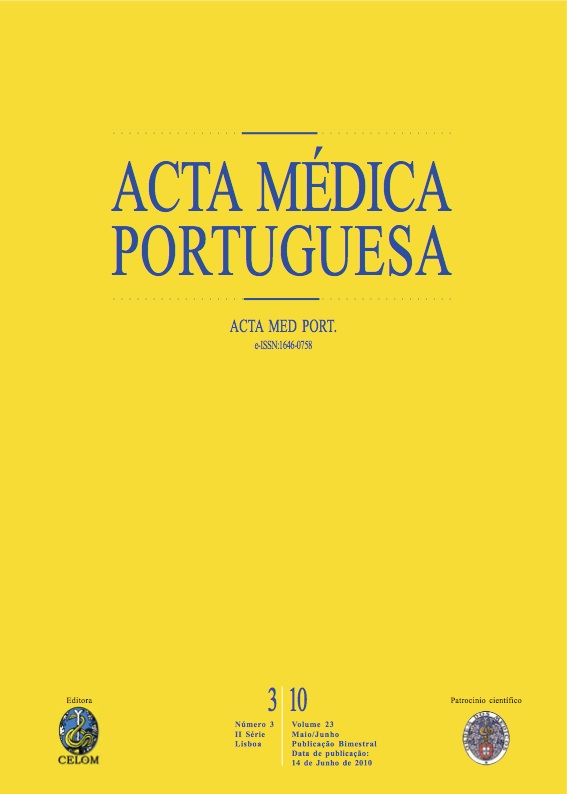Neutropénia crónica benigna da infância.
DOI:
https://doi.org/10.20344/amp.624Resumo
The term neutropenia concerns the reduction of the amount of circulating neutrophils in peripheric blood. The Chronic Benign Neutropenia of Childhood (CBNC) is characterized by the presence of a circulating neutrophils total number (absolute count) below 1,5 x 10(9)L, for over a six-month period. The diagnosis is established when the laboratorial changes occur during the first two years of life, without previous history of serious infections, nor neutrophils morphological changes, nor hypocellular bone marrow examination. The cellularity is normal or increased and a neutrophil maturation arrest at some phase can be observed. Generally, the whole process is solved by the age of four. Because this is a very rare clinical situation, it justifies a bibliographic revision about the theme. We present the clinical case of a 15 month-old-child, admitted with fever and diarrhea associated with neutropenia. Bone marrow aspiration, other laboratorial exams carried out during hospital internment and presented clinical evolution were consistent with CBNC diagnosis.Downloads
Downloads
Como Citar
Edição
Secção
Licença
Todos os artigos publicados na AMP são de acesso aberto e cumprem os requisitos das agências de financiamento ou instituições académicas. Relativamente à utilização por terceiros a AMP rege-se pelos termos da licença Creative Commons ‘Atribuição – Uso Não-Comercial – (CC-BY-NC)’.
É da responsabilidade do autor obter permissão para reproduzir figuras, tabelas, etc., de outras publicações. Após a aceitação de um artigo, os autores serão convidados a preencher uma “Declaração de Responsabilidade Autoral e Partilha de Direitos de Autor “(http://www.actamedicaportuguesa.com/info/AMP-NormasPublicacao.pdf) e a “Declaração de Potenciais Conflitos de Interesse” (http://www.icmje.org/conflicts-of-interest) do ICMJE. Será enviado um e-mail ao autor correspondente, confirmando a receção do manuscrito.
Após a publicação, os autores ficam autorizados a disponibilizar os seus artigos em repositórios das suas instituições de origem, desde que mencionem sempre onde foram publicados e de acordo com a licença Creative Commons









